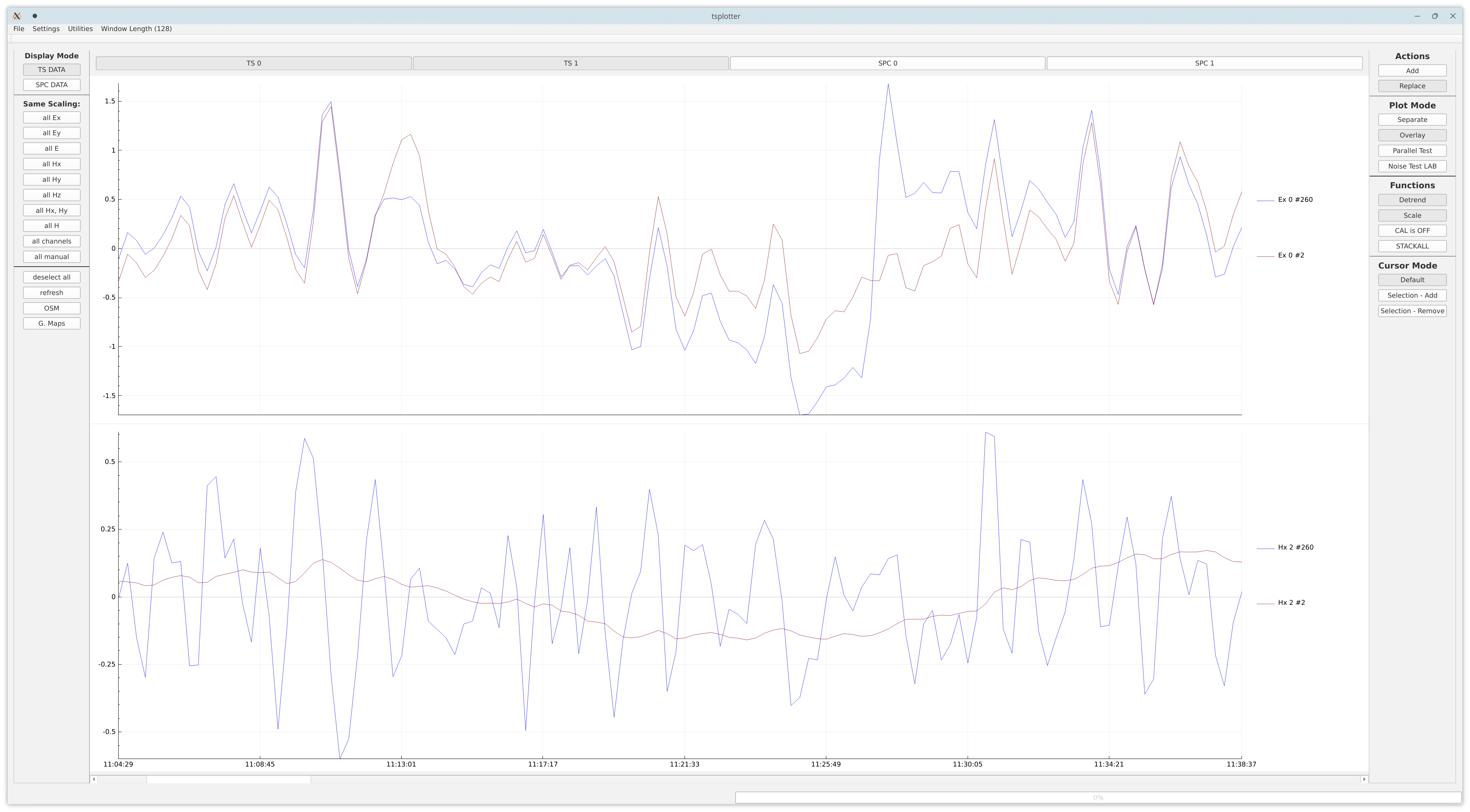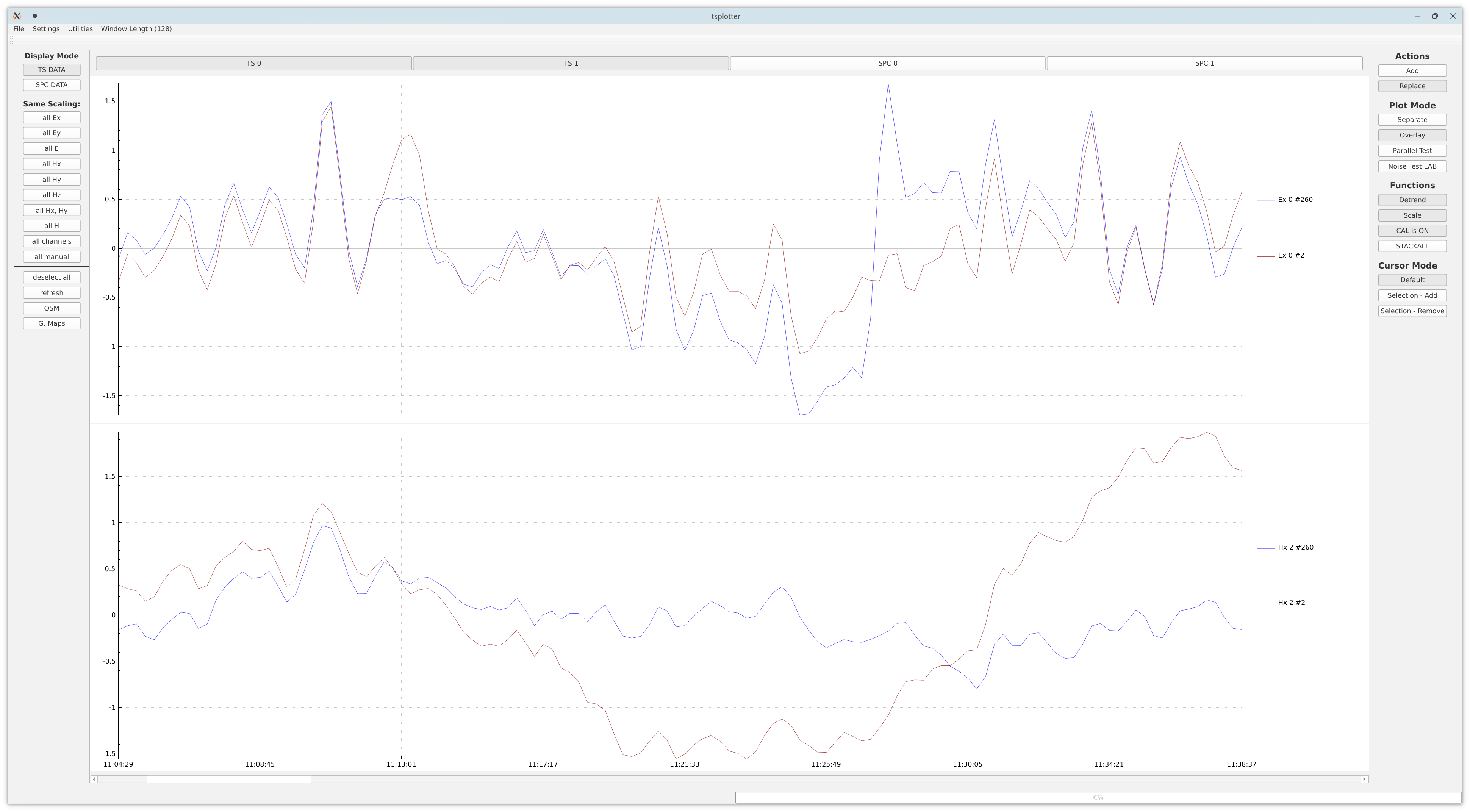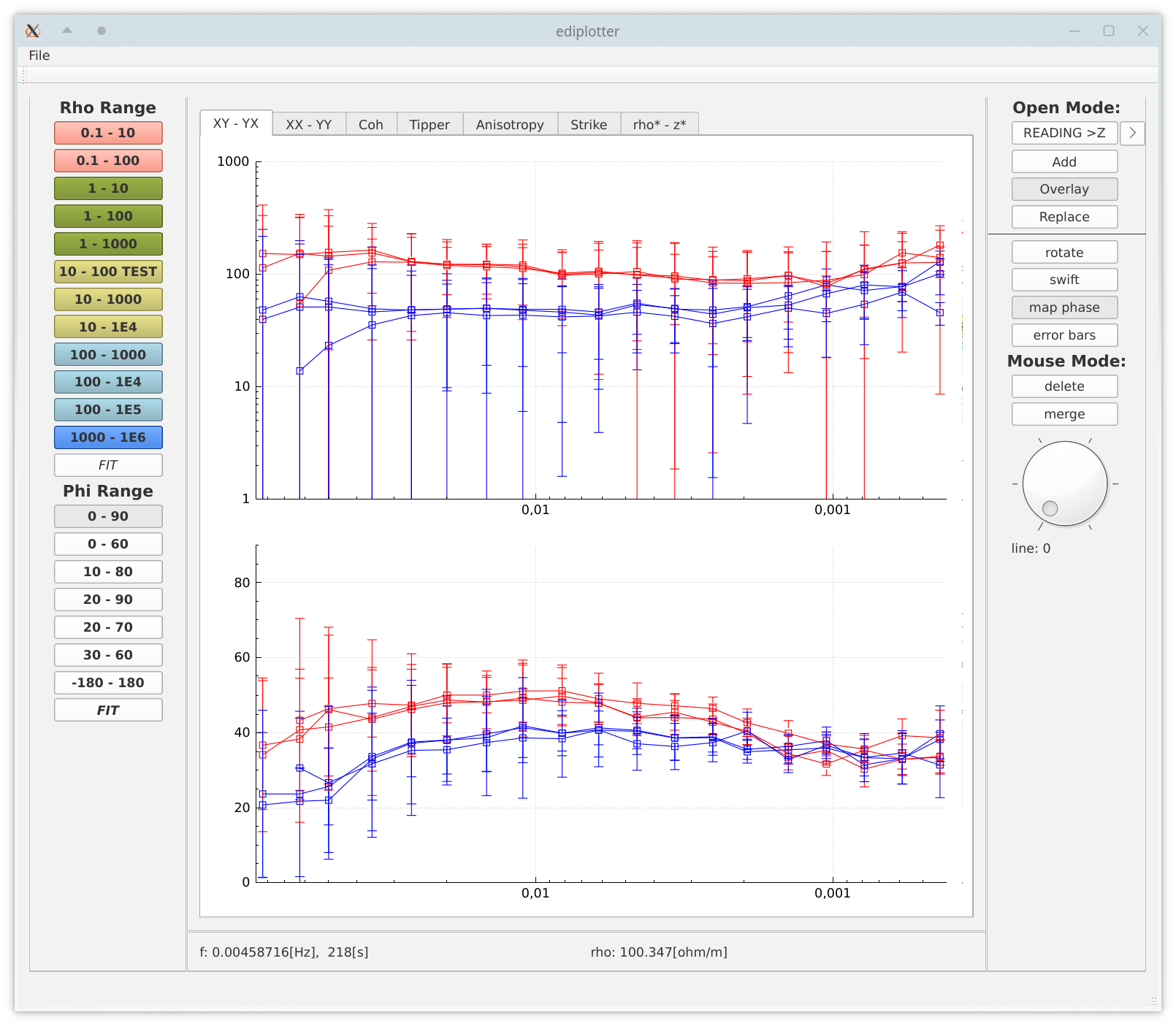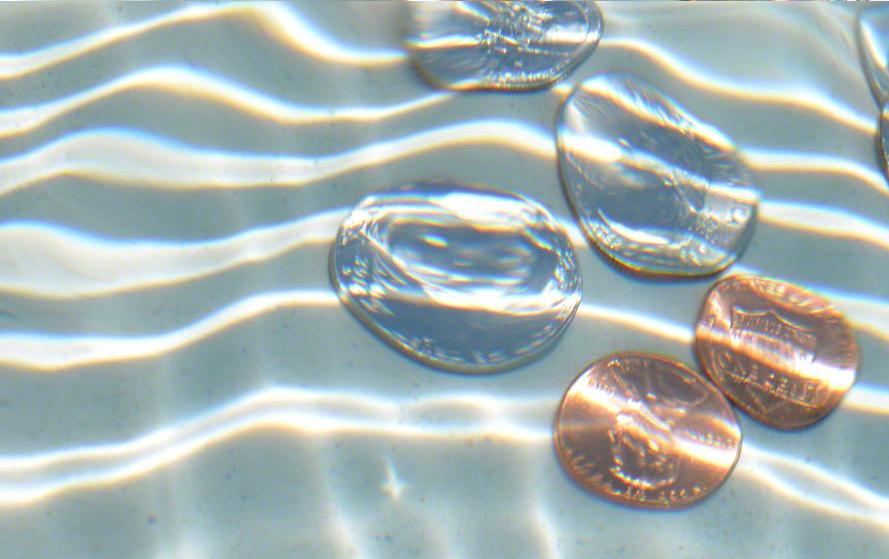FAQ MT
10,000s with coils
Can I get 10,000s data with coils?
Yes, but …
First of all, that is around a 3hrs period, and we are talking of depths of 20-100km. Including spectral smoothing we need 4 hrs for a stack. If you would have 20 perfect stacks that would be 80hrs only.
This is completely unrealistic - or rare.

The output voltage at 10,000s is small and the magnetic activity should be good or even high in order to compensate that.
As a rule of thumb for the metronix MFS-06e coil :
Until 1000s there is no need for a fluxgate.
Recordings should be between 1 day (excellent place) to 3 days.
For 10,000s you should a) record for 6-10 days and may consider using a fluxgate.
10s with fluxgate
No.
Even though many fluxgates are specified up to 1 kHz, they do not work for MT in that frequency range.
100s is a good starting point … sometimes 30s; above active sources are expected.
Fluxgate and Coil Fit
not perfectly…
Yes, there is never a perfect fit because the coil measures the time derivative of the magnetic, and by applying the calibration
you integrate the signal over a limited interval (e.g. FFT length). In order to come close to the fluxgate
which measures the magnetic field directly, you must integrate over an infinite interval. So, that’s point number one.
Secondly the coil can not measure the DC part of a signal. From 1000 s onwards the fluxgate becomes the winner
and the coil drops down below 4096 s and vanishes around 10,000 s.
Below 1000 s coils need good MT activity in order get reasonable date whereas the fluxgate is much less affected by low
MT activity.
Example data with FGS-04 & MFS-06e:

(blue coil, red fluxgate)
You see that the coil data looks like “high pass filtered” whereas the fluxgate shows already the magnetic field.

After applying the calibration over 128 points (as shown in the window) both sensors show almost identical data. But what also becomes visible: the fluxgate data (red line) shows low underlying 40 min variation which is already very small when looking at he blue line (coil).
Nicely to see: the electric field data has also tiny differences. Red is better; if you look at the DC offset you would see -50 mV for red and -250 mV for blue (not visible in the plots above); a large offset indicates an old electrode (or bad placement). In MT we fear the slow degrade of the electrodes over time. In this short parallel test the coil system’s electrodes need to be exchanged now.
EDI result:
Recordings were carried out in December 2021, approximately 2 x two days (battery went down) and as mentioned above, one system did not have fresh electrodes. Overall: the default case.
Shown are three processing: coil system, fluxgate system and coil with fluxgate as remote reference.

For the expected overlapping range between 80 s and 2000 s there almost no visible differences. At the left side, higher frequencies, the drop down of the fluxgate is visible - and the processing ends early. Below 1700 s slight differences are visible, which is fine for an interrupted recording of this duration. The remote reference processing adds no extra value here because the system were side by side - but demonstrate that fluxgate and coil data can be mixed.
How long do I have to record?
That is the overall question in MT.
The property you should know: TIME EQUALS DEPTH
As in the example above: For 1000s to be evaluated you need 1 hour of recording (including the smoothing in the spectral domain, which adds frequencies
at the beginning and end of the spectra). That means continuous and error free in order to mark this stack as valid.
If you say you want 20 stacks, you need 1 day.
If you have 30 to 50% loss you end up in realistic 2 days.
If someone tells you “1000s a day” it may one of these commercial guys, making you believe that MT is super cheap and fast (or he is simply stupid … or both).
We have seen in almost all recent publications in geothermal that the data quality is poor (here they want to be very fast because of many stations to measure).
… and please do not believe that “robust” is the big iron, making your curves smooth. It works to a certain extend. However, a minimum of valid stacks is always needed.
How deep?
This is a question which can not been answered directly. Learn that please.
Question: How far do I get when I drive for one hour on a motorway?
Answer: depends on our speed (aka conductivity) and traffic jam (aka noise level).
coil preferred |
duration |
application type |
environment |
periods |
depth |
|---|---|---|---|---|---|
MFS-06e |
1-2 days |
general studies / geothermal |
sediments |
1000s |
3-6 km |
MFS-06e |
3-6 days |
general studies |
sediments |
5000s |
8-12 km |
MFS-06e |
1-2 days |
general studies |
rocks |
1000s |
8-15 km |
MFS-06e |
3-6 days |
general studies |
rocks |
5000s |
20-100 km |
MFS-07e |
1-2 days |
general studies / geothermal |
sediments |
1000s |
3-6 km |
MFS-07e |
1-2 days |
general studies / geothermal |
rocks |
1000s |
8-15 km |
MFS-07e |
8 hours |
general studies / geothermal |
sediments |
100s |
2-3 km |
MFS-07e |
8 hours |
general studies / geothermal |
rocks |
100s |
4-6 km |
SHFT-02e |
15 mins |
environmental |
normal soils |
1 kHz |
30-100 m |
These are basic estimates. If you would calculate the skin deepth you get deeper; but skin depth is much deeper compared to the result getting from MT processing which includes spectral smoothing.
The timeseries must be continuous / contiguous (non interrupted). Imagine you have 40 segments of 30 min recodings. How do you obtain 1 hour period? … never.
For geothermal the important two questions are: how thick is the clay cap and how deep is the reservoir? If you commercially estimate 3 km and planning to make 300 stations with 1 day recording time, you end up with the MFS-07e. This caclulation can be completely destroyed in case you have small vibrations due to micro seismic activity of a volcano nearby - as we often see in Indonesia.
How shallow?
coil preferred |
duration |
application type |
environment |
periods |
depth |
|---|---|---|---|---|---|
MFS-06e |
15 min |
general studies |
sediments |
4096 Hz |
80-100 m |
MFS-06e |
15 min |
general studies |
rocks |
4096 Hz |
120-300 m |
MFS-06e |
5 min |
general studies |
sediments |
10,000 Hz |
30-100 m |
MFS-06e |
5 min |
general studies |
rocks |
10,000 Hz |
70-120 m |
MFS-06e |
is not a dedicated AMT coil |
prefer MFS-07e |
|||
MFS-07e |
15 min |
general studies |
sediments |
4096 Hz |
80-100 m |
MFS-07e |
15 min |
general studies |
rocks |
4096 Hz |
120-300 m |
MFS-07e |
5 min |
environmental studies |
sediments |
50,000 Hz |
10-40 m |
MFS-07e |
5 min |
environmental studies |
rocks |
50,000 Hz |
30-100 m |
SHFT-02e |
15 sec |
environmental studies |
sediments |
132 kHz |
5-10 m |
SHFT-02e |
15 sec |
environmental studies |
rocks |
524/132 kHz |
5-10 m |
For frequencies above 20 kHz: buffered cables with length 25 m are needed; for 132 kHz and above: 5 m buffered cables are needed. Use a steel rod.
In case you use the MFS-07e and catch AMT signals for general studies, you do not need to change your electrode cables and electrodes. With some luck and not too high contact resistivity the result will be fine.
If you make dedicated environmental studies (shallow water contermination for example) where you need results for each station you need buffered cables.
For all measurements we always recommend to use the full frequency range of the sensor. For the MFS-06e you should schedule a 64 or 32 kHz run, for the MFS-07e a 64 or 132 kHz run. In case AMT data was successfully catched, maybe one of the phases is close to 45°. If this is the case, the chance of correcting static shift is high. Additionally your inversion results will be better - because they always have to guess the surface layer.
If size does not matter
As explained here chopper: If your disk size does not matter (and additionally you do timeseries pre-processing), you divide into chopper on and chopper off job.
Typical jobs (as also scheduled by the mobile app) with MFS-06:
f sample [Hz] |
duration |
chopper |
MB for 5 channels |
|---|---|---|---|
32 kHz |
3:25 min |
off |
128 |
4 kHz |
15:25 min |
off |
72 |
256 Hz |
1-10 day(s) |
on |
420-4200 |
The last job may be longer and depends on your target depth.
If you want to get more AMT data for the MFS_06e make the fist job longer
f sample [Hz] |
duration |
chopper |
MB for 5 channels |
|---|---|---|---|
32 kHz |
10:25 min |
off |
390 |
4 kHz |
15:25 min |
off |
72 |
256 Hz |
1-10 day(s) |
on |
420-4200 |
For the MFS-07e you may be interested to catch frequencies above 10 kHz
f sample [Hz] |
duration |
chopper |
MB for 5 channels |
|---|---|---|---|
64 kHz |
3:25 min |
off |
256 |
4 kHz |
15:25 min |
off |
72 |
256 Hz |
1-10 day(s) |
on |
420-4200 |
or with more AMT focus
f sample [Hz] |
duration |
chopper |
MB for 5 channels |
|---|---|---|---|
256 kHz |
3:25 min |
off |
1025 |
64 kHz |
10:25 min |
off |
781 |
4 kHz |
15:25 min |
off |
72 |
256 Hz |
1-10 day(s) |
on |
420-4200 |
With parallelized software (like ProcMT) processing is no problem.
Hence that on high resistive ground the 524kHz job may require buffered cables”.
Why do I need to stack timeseries?
Imagine you see a coin at the bottom of a swimming pool.

You will see that the face is changing; that is not the true image of the coin because the light is changing. If you wait for a while and make, let’s say 20 pictures, you will be able to combine these pictures (by statistics) and come close to the “true image”.
Rotated Setups
The default setup is N-S and E-W orientated; that is the case in 99.9% of all measurements. If you do it in different way
you will sooner or later forget it - or one of the other scientists will assume that is was the default orientation.
There is absolutely no benefit from rotating your setup.
Always use the full cable length
For E: you get a natural amplification of your E field, free of noise. Only in rare cases
with high static fields it can be a disadvantage.
If you cant use the full length - no problem.
For H: keep the sensors apart from the system! They will record the vibrations when you change the batteries and see your laptop / mobile phone working.
Always use Grounding (GND)
The system needs GND because the measurement of the E field is referred to GND. Take same care as when burying electrodes.
Never use Salt!!
Never use salt to keep the electrodes wet. The chemistry of Pb-PCl2 and Ag-AgCl gets destroyed. Use bentonite for keeping the electrodes humid.
Electrodes As deep as possible
90% of all errors and pain is caused by the electrodes and the electric field. In wet and conductive areas you are fine. In dry and resistive areas you are facing noise and dry out. Dig the electrodes as deep as possible. You are the winner in case you reach the depth of natural moisture. I know this easy speaking. On the other hand: you drive 1000 km to your site, having a team of 4 persons to pay … and then save some ten minutes for time?
(click video to full screen)
(Video: Thanks to NGRI)
L-layout
Gives more problems than compared to save one electrode.